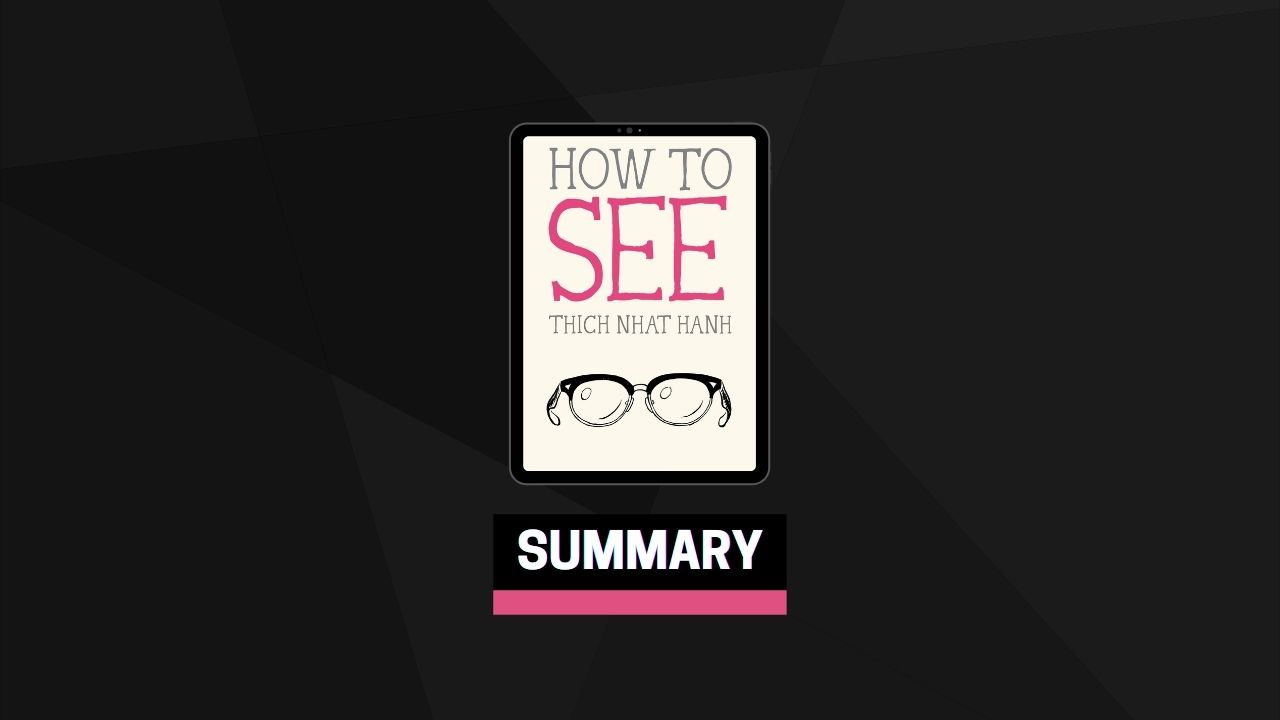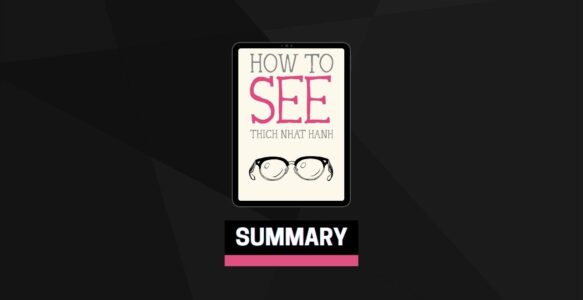The clear still water of a mountain lake reflects the mountain and the sky with pristine clarity. You can do the same. If you are calm and still enough, you can reflect the mountain, the blue sky, and the moon exactly as they are. You reflect whatever you see just as it is, without distorting anything.
In each of us there is a river of perceptions. Perceptions arise, stay for a period of time, and cease to be. When our mind is not calm, we do not see clearly. Like the surface of a lake on a windy day, the image we see is distorted. Our perceptions are often erroneous, and cause us to suffer and cause others to suffer. It is very helpful to look deeply into the nature of our perceptions, without being too sure of anything. When we are too sure, we suffer. When we ask ourselves, “Are you sure?” we have a chance to look again and see if our perception is correct or not.
We are convinced that our perceptions are correct and complete, yet often they are not. In the Chinese character for perception, the upper part is “sign” or “appearance,” and the lower part is “mind.” When we perceive something, an image of that thing—a sign—is created in our mind, and in many cases that sign is illusory. It is very easy to confuse our mental image of something with its reality. It is important not to be too sure of our perceptions.
Imagine you are walking in the twilight and you see a snake. You scream and run into the house to get your friends, and all of you rush outside with a flashlight. But when you shine your light on the snake, you discover it isn’t a snake at all, it’s just a piece of rope. Mistaking the rope for a snake is a wrong perception. Mindfulness helps us avoid being caught by our wrong perceptions.
The practice of full awareness is to look deeply in order to see the true nature of things and go beyond our inaccurate perceptions. Seeing a rope as a snake, we may cry out in fear. Fear is a feeling brought about as a result of our wrong perception. Our perceptions are often inaccurate and can bring about strong feelings and reactions and cause much unnecessary suffering. Once we have seen the true nature of the object of our fear, our fear will vanish.
The source of perception, our way of seeing, lies in our unconscious mind. Most of our perceptions are erroneous. They carry with them all the errors of subjectivity. We praise or blame, are happy or complain depending on our perceptions. Our perceptions are made of many things, including our afflictions, such as craving, anger, and ignorance, as well as our habit energies and past experiences. Whether we are happy or whether we suffer depends largely on our perceptions. It is important to look deeply into our perceptions and recognize their source.
Everything is born from our mind, from our way of looking. Deception is born from signs, external appearances. According to the Diamond Sutra, “In a place where something can be distinguished by signs, in that place there is deception.” In other words, where there is perception, there is deception.
Our practice is to transcend signs to see more clearly. Until we look deeply into reality and discover its true nature of impermanence and interconnectedness, we will continue to be fooled by signs. When we transcend signs, notions, and ideas, we are in touch with the ultimate reality. We need to see through the outer form to be in touch with the substance. When we’re no longer deceived by signs, our perceptions become insight.
All phenomena are objects of mind, they’re not objective realities. When we perceive something, that thing is the object of our consciousness. There needs to be both a perceiver and an object of mind for a perception to be obtained. The world is just an object of mind. When you see a mountain, that mountain is the object of your mind, the object of your perception; it’s not something separate from your consciousness.
Usually we think that there’s a subjective consciousness inside us that’s reaching out to the world of reality outside. But this is a wrong view. We have to see that both subject and object of perception rely on each other and manifest at the same time. The object can never be separated from the mind that observes or meditates upon it.
Relatively speaking, there are right views and wrong views. But if we look more deeply, we see that all views are wrong views. Any view is just from one point; that’s why it’s called a point of view. If we go to another point, we have a different perspective, we see things differently, and we realize that our first view was not entirely accurate. We need to continue expanding the boundaries of our understanding or we will be imprisoned by our views.
A tree reveals itself to an artist only when the artist can establish a relationship with the tree. If we are not fully ourselves, fully human, we may look at our fellow humans without truly seeing them, just as we may look at a tree and not truly see it. When we are in touch with ourselves, we know how to live in such a way that a beautiful future for the world is possible.
The question “Is a human future possible?” is meaningless if we can’t see the millions of fellow human beings who are suffering, living, loving and dying around us. Only when we come home to ourselves and get in touch with ourselves can we really see ourselves and others and be in touch with the world around us.


